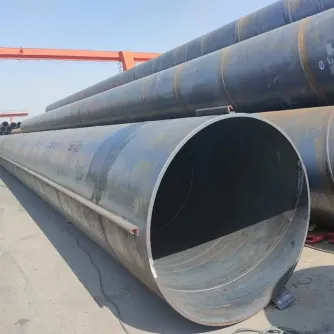-
Cangzhou Yulong Steel Co., Ltd.
-
Phone:
+86 13303177267 -
Email:
admin@ylsteelfittings.com
- English
- Arabic
- Italian
- Spanish
- Portuguese
- German
- kazakh
- Persian
- Greek
- French
- Russian
- Polish
- Thai
- Indonesian
- Vietnamese
- Zulu
- Korean
- Uzbek
- Hindi
- Serbian
- Malay
- Ukrainian
- Gujarati
- Haitian Creole
- hausa
- hawaiian
- Hebrew
- Miao
- Hungarian
- Icelandic
- igbo
- irish
- Japanese
- Javanese
- Kannada
- Khmer
- Rwandese
- Afrikaans
- Albanian
- Amharic
- Armenian
- Azerbaijani
- Basque
- Belarusian
- Bengali
- Bosnian
- Bulgarian
- Catalan
- Cebuano
- China
- China (Taiwan)
- Corsican
- Croatian
- Czech
- Danish
- Esperanto
- Estonian
- Finnish
- Frisian
- Galician
- Georgian
- Kurdish
- Kyrgyz
- Lao
- Latin
- Latvian
- Lithuanian
- Luxembourgish
- Macedonian
- Malgashi
- Malayalam
- Maltese
- Maori
- Marathi
- Mongolian
- Myanmar
- Nepali
- Norwegian
- Norwegian
- Occitan
- Pashto
- Dutch
- Punjabi
- Romanian
- Samoan
- Scottish Gaelic
- Sesotho
- Shona
- Sindhi
- Sinhala
- Slovak
- Slovenian
- Somali
- Sundanese
- Swahili
- Swedish
- Tagalog
- Tajik
- Tamil
- Tatar
- Telugu
- Turkish
- Turkmen
- Urdu
- Uighur
- Welsh
- Bantu
- Yiddish
- Yoruba

Nov . 12, 2024 10:01 Back to list
threaded blind flange
Understanding Threaded Blind Flanges A Comprehensive Guide
Threaded blind flanges are critical components in piping systems across various industries, including oil and gas, chemical processing, and water treatment. They serve a specific purpose to seal off the end of a piping system, preventing fluid or gas leakages while allowing for easy installation and removal. This article aims to explore the design, applications, advantages, and considerations associated with threaded blind flanges.
What is a Threaded Blind Flange?
A threaded blind flange is a type of flange that features internal threads on its central hole. Unlike standard blind flanges, which are flat and feature no opening, threaded blind flanges allow you to easily connect to pipes that have external threads. This design creates a robust seal that can withstand high pressures and prevent leaks, making them particularly useful in applications where tampering or accidental disconnections must be avoided.
Design Specifications
Threaded blind flanges are typically made from various materials, including stainless steel, carbon steel, and alloy materials, which can provide resistance to corrosion and extreme temperatures. They are available in various sizes and thicknesses, enabling them to suit a wide array of applications. The American National Standards Institute (ANSI) and other organizations provide specific standards, like ASME B16.5, that outline the dimensions, tolerances, and pressure ratings for these flanges.
Applications of Threaded Blind Flanges
Threaded blind flanges are used primarily in situations where it is necessary to terminate a piping run. Some common applications include
1. Piping Systems They are often used in water supply and drainage systems to cap off lines that are not in current use. 2. Maintenance Points In industrial settings, they can be utilized in areas that may require future maintenance or inspection, permitting easy access to the pipeline. 3. Pressure Vessels and Tanks Threaded blind flanges can seal off openings in pressure vessels and tanks to ensure safety and operational integrity.
Their versatility allows them to be utilized in various industries, enhancing their overall utility and demand
.threaded blind flange

Advantages of Threaded Blind Flanges
1. Ease of Installation Since they come with internal threads, threaded blind flanges can be easily installed and removed without special tools. This feature is particularly beneficial when systems require occasional maintenance.
2. Cost-Effective Using threaded blind flanges can reduce labor costs and installation times, making them a financially viable option for many projects.
3. Safety The robust seal that threaded blind flanges provide helps to prevent potential leaks, ensuring the safety of operations and personnel in environments that involve hazardous materials.
4. Flexibility They can easily be integrated into existing piping systems, allowing engineers to redesign flows without replacing entire sections of pipework.
Considerations When Using Threaded Blind Flanges
When selecting and utilizing threaded blind flanges, several factors must be taken into consideration
- Material Compatibility Ensure that the flange material is compatible with the fluids or gases it will encounter to prevent corrosion. - Pressure and Temperature Ratings Always check the pressure and temperature ratings of the flanges to ensure they meet the operational needs of the system. - Installation Torque Proper torque specifications must be followed during installation to prevent damage or leaks. - Standards Compliance Always adhere to industry standards and codes to ensure safety and reliability in system operations.
Conclusion
Threaded blind flanges play a vital role in the integrity and performance of piping systems. Their ease of installation, safety features, and compatibility make them indispensable in a variety of industrial applications. Understanding their specifications, advantages, and potential considerations will enable engineers and technicians to make informed decisions when designing and maintaining piping systems. In an era where safety and efficiency are paramount, the choice of the right flanges can significantly impact operational success.
Latest news
-
ANSI 150P SS304 SO FLANGE
NewsFeb.14,2025
-
ASTM A333GR6 STEEL PIPE
NewsJan.20,2025
-
ANSI B16.5 WELDING NECK FLANGE
NewsJan.15,2026
-
ANSI B16.5 SLIP-ON FLANGE
NewsApr.19,2024
-
SABS 1123 FLANGE
NewsJan.15,2025
-
DIN86044 PLATE FLANGE
NewsApr.19,2024
-
DIN2527 BLIND FLANGE
NewsApr.12,2024
-
JIS B2311 Butt-Welding Fittings LR/SR 45°/90° /180°Seamless/Weld
NewsApr.23,2024











